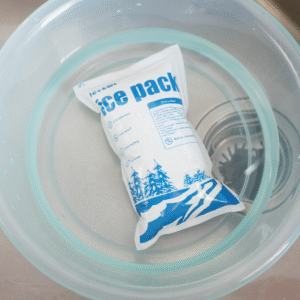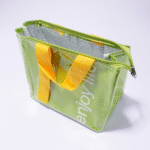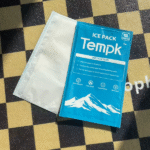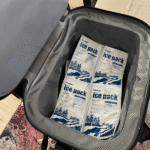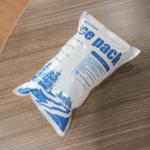Wie man Fisch richtig in Trockeneis packt (2025)
Wenn Sie fragen wie man Fische in Trockeneis packt, Hier ist die kurze Antwort: Verwenden Sie einen dicken isolierten Versender, das Paket entlüften, Schicht trockenes Eis über und unter dem Fisch, und Mark „Trockeneis/Un1845“ mit Nettogewicht. Planen 5–10 lb per 24 Std., Fügen Sie einen Puffertag hinzu, und folge dem 2.5 KG Airline Grenze für Gepäck. Sie werden die Meeresfrüchte fest und konform auf Reisen bis zu 72 Std..
-
Ausrüstung, die funktioniert: Der genaue Kühler, Liner, und Etiketten für wie man Fische in Trockeneis packt auf 24 bis 72H Routen
-
Rechte Menge an Trockeneis: Ein kurzer Planer für Langzeitlieferungen und heißes Wetter
-
Compliance der Fluggesellschaft und Kurier: Praktische UN1845 Kennzeichnung und Entlüftung, die die Überprüfungen bestehen
-
Schritt -für -Step -Packout: Eine wiederholbare Methode, die Lecks verhindert, Gerüche, und auftauen
-
Trends für 2025: Wie bessere Isolierung und Low -Cost -Holzfäller das Trockeneisgewicht schneiden
Welche Ausrüstung brauchen Sie? Fisch in Trockeneis packen?
Kurze Liste: Isolierter Versender (≥ 1–2 ″ Wände), REIGISCHE OUTER BOX, Vakuumbeutel mit Lebensmitteln, absorbierender Pad, Vapor Barrier Liner, Trockeneis (Blöcke oder große Pellets), Hohlraumfüllung, Isolierte Handschuhe, Und „Trockeneis/UN1845 + Net KG " Markierungen außen.
Warum funktioniert es: dicker Schaum- oder VIP -Felder langsamer Wärmegewinn; Vakuumbeutel blockieren Gerüche und Gefrierschrankbrand; Der Liner verhindert Feuchtigkeit daran, den Karton zu mildern; Entlüftung verhindert Co₂ -Druckaufbau. Fischen Sie vollständig gefroren an, oder frischer Fisch bei ~ 32 ° F. (0°C). Diese kleinen Entscheidungen halten die Temperaturen stabil und verringern Ansprüche.
Trockeneis vs. Gelpackungen - wenn sie jeweils für Meeresfrüchte verwenden,?
Fazit: für wie man Fische in Trockeneis packt am mehrtägigen Tag, gefrorene Gassen, Verwenden Sie Trockeneis als Hauptkühlmittel. Gelpackungen sind großartig als Unterstützung (Glättere Warm -up -Kurve) oder für Kühltes nicht -frozen Lieferungen. Wenn Sie den Fisch unfrenzend halten müssen, Puffer das Trockeneis mit Karton und benutze weniger.
| Packout -Typ | Trockeneis pro 24H | Typische Dauer | Was es für Sie bedeutet |
|---|---|---|---|
| EPS -Schaum 1–1,5 Zoll | 8–12 lb | 24–48 h | Budgetfreundlich; Puffer im Sommer hinzufügen. |
| EPS -Schaum 2 " | 6–10 lb | 48–72 h | Gut für Wochenenden, wenn auch vorbereitet. |
| VIP -Panels | 4–8 lb | 72 H+ | Prämie; Am besten für heiße Routen oder lange Zoll. |
Praktische Tipps, die Sie heute bewerben können
-
Alles vorschreiben: Fisch, Absender, und Leerfüllung.
-
Spitze + Bodenschichten: Legen Sie etwas Trockeneis unter und mehr darüber; Kaltes Co₂ sinkt.
-
Vermeiden Sie luftdichte Dichtungen: einen Entlüftungsweg hinterlassen; Schalten Sie den Deckel niemals ab.
-
Netto schreiben kg: Die Aufsichtsbehörden erwarten Kilogramm auf dem Etikett.
Real -World -Fall: 20 LB Lachs in einem 2 -Zoll -Schild mit Schaumstoff mit 18 LB Trockeneis (Split oben/unten) kam nach ~ 40 Stunden bei –12 ° C durch Datenlogger an - kein Auftauen und keine Leckage.
Wie viel Trockeneis brauchen Sie Fisch in Trockeneis packen für 24–72 Stunden?
Faustregel: 5–10 lb per 24 Std., Dann fügen Sie a hinzu Puffertag Für Verzögerungen. Verwenden Sie das obere Ende für Pellets, dünne Isolierung, Häufige Öffnungen, oder heißes Wetter.
Warum dieser Bereich funktioniert: Sublimation hängt von der Oberfläche ab, Isolierung, und Umgebungswärme. Dicker Schaum oder VIP verlangsamt den Verlust; Die Minimierung von Hohlräumen reduziert die Konvektion. Die Planung mit einem Basis -Plus -Puffer hält Lasten gefroren, auch wenn Routen ausrutschen.
Schneller Dry -Ice -Planer (kopieren/einfügen)
Wie Fisch in Trockeneis packen Schritt für Schritt?
Essentials: Einfrieren oder zuerst kühlen, Doppelbeutel, die Box auslegen, Trockeneisboden, Fisch in der Mitte, Trockeneisoberteil, Hohlräume füllen, schließen entlüftet, Dann Mark UN1845 + Netz kg.
Details, die Probleme verhindern: Verwenden Sie 3 bis 4 Mio. Vakuumbeutel; Fügen Sie ein dünnes Kartonblech zwischen Trockeneis und Fisch hinzu, um das Verbrennen von Oberflächen zu verhindern; Halten Sie Etiketten auf einem Panel („Trockeneis/Kohlendioxid, solide,”UN1845, Netz kg); Tragen Sie isolierte Handschuhe und Augenschutz.
Schritt -für -Step -Checkliste
-
Fisch vor der Kondition (gefroren, oder frisch bei ~ 32 ° F/0 ° C).
-
Vakuumseal Teile; Doppelbeutel ölige Arten.
-
Säumen Sie den Versender mit Absorption + Dampfbarriere; Fügen Sie ein Wellpad hinzu.
-
Fügen Sie eine niedrigere Trockenchefschicht hinzu (Blöcke dauern länger als Pellets).
-
Fisch flach laden mit minimalen Lüftungslücken.
-
Fügen Sie die Schicht der oberen Dry -Eise hinzu Für den kalten Fluss nach unten.
-
Hohlräume füllen mit Kraft/Blase; Bewegung vermeiden.
-
Eng entlüftet- Niemals luftdicht; sichern Sie den äußeren Karton.
-
Etikett: “Dry Ice,"Un1845" und Netz kg auf dem gleichen Gesicht.
Kannst du Fisch in Trockeneis packen für Flugbahnreisen?
Ja - bisher Grenzen. Passagiere können tragen bis zu 2.5 kg (5.5 lb) von Trockeneis pro Person und Packung in belüfteten Verpackungen mit Zustimmung der Fluggesellschaft. Markieren „Trockeneis/Kohlendioxid, solide,”UN1845, Netz kg. Verwenden Sie eine starre, Leckresistenter Kühler in einer Tasche oder Schachtel, und den Deckel behalten undicht.
Flughafen Mini -Checklist
-
Fisch gefroren/vakuumversiegelt; Kein freies Wasser ("Nasseis").
-
Starrkühler + Außenkarton; einen Entlüftungsweg hinterlassen.
-
Totales Trockeneis ≤ 2,5 kg; bei Check -in.
Wie Fisch in Trockeneis packen Für Kurierversand (FedEx/ups/USPS)?
Markierungen und Entlüftungsgewinngenehmigungen. Setzen richtiger Versandname, UN1845, Klasse 9 markieren, Und Netz kg auf einem einzigen vertikalen Panel; Tun nicht Versiegeln Sie die Packung luftdicht. Wählen Sie die kürzester lebensfähiger Service- Less Zeit bedeutet weniger Trockeneis.
Dokumentation Schnellversicherung
-
Eigenname: "Trockeneis" oder „Kohlendioxid, solide."
-
UN -Nummer: UN1845; Klasse: 9 (Verschiedenes).
-
Netto -Trockeneis in kg auf der Box und (gegebenenfalls) auf der Atemwegsrechnung.
-
Adressen: Versender und Empfänger deutlich gedruckt.
2025 Trends: wie zu Fisch in Trockeneis packen Besser mit neuer Technologie
Was ist neu in 2025: Aktualisierte Checklisten der Airline -Akzeptanz betonen Net -KG -Markierungen Und Etikettenplatzierung, während VIP -Panels Und Low -Cost -Logger Reduzieren Sie die Lasten von Trockenzeiger und beweisen Sie die Temperaturregelung. Die Nachfrage der Verbraucher nach „Dock -to -toor in zwei Tagen“ treibt wiederverwendbare Isolierungen und intelligentere Routing voran.
Neueste Entwicklungen auf einen Blick
-
Intelligentere Überwachung: Pocket -Size -Holzfäller geben Ankunftsnachweise und Geschwindigkeitsansprüche.
-
Isolierung Upgrades: VIP/Leichtgewichtige Hybriden erreichen die gleiche Haltezeit mit weniger Eis.
-
Operative Strenge: Träger prüfen die Entlüftung und die UN1845 -Markierungen konsequenter.
Market insight: Meeresfrüchtexporteure unter Verwendung verifizierter Protokolle und Löschen von UN1845 -Kennzeichnungsbericht weniger Verzögerungen und Credits. Die Optimierung der Isolierung spart häufig mehr Gewicht (und Kosten) als zu über -über -zu.
FAQ: wie man Fische in Trockeneis packt
Q1. Wie viel Trockeneis für eine 48 -stündige Sendung?
Planen 16–24 lb für 1–1,5 Zoll EPS, 12–18 lb für 2 "EPS, oder 10–16 lb für VIP, plus ~ 5 lb Puffer.
Q2. Kann ich einen Kühler kleben, um die Kälte zu fangen??
NEIN. Luftdicht ist unsicher. Trockeneisöffnungen Co₂; Pakete müssen Gas freisetzen.
Q3. Welche Temperaturen sollte ich zielen??
Halten frisch Fisch in der Nähe 32° F (0°C); sicherstellen ≤ 40 ° F. (4.4°C) im Handling. Halten gefroren Fischgestein fest.
Q4. Kann ich Gelpackungen mit Trockeneis kombinieren??
Ja. Gelpackungen glatte Temperaturschwankungen, aber nicht alleine eingefroren bleiben.
Q5. Was geht auf das Etikett?
**„Trockeneis/Kohlendioxid, solide,”UN1845, und Netz Kilogramm von Trockeneis - auf einem Gesicht genau sichtbar.
Zusammenfassung: wie man Fische in Trockeneis packt wie ein Profi
Erinnere dich an die vier Bewegungen: Starten Sie kalt, bauen a entlüftet Isoliertes Paket, zuweisen 5–10 lb pro Tag Plus Puffer, und Mark UN1845 + Netz kg. Schicht Trockeneis ober und unten, Hohlräume füllen, und wähle die kürzester Service Das passt zu Ihrer Spur. Folgen Sie diesen Grundlagen und Ihre Meeresfrüchte kommen gefroren an, sauber, und konform.
Nächste Schritte (CTA):
-
Verwenden Sie das Schneller Dry -Ice -Planer oben für Ihre Route.
-
Wähle a 2"EPS oder VIP Versender für 48–72 Stunden Fahrspuren.
-
Herunterladen eine druckbare UN1845/Klasse 9 Panel- und Packout -Checkliste.
-
Sprechen Sie mit Tempk Für einen spielspezifischen Blaupause und ein SOP.
Über Tempk
Wir entwerfen praktische Kaltspielbücher und Verpackungen für Meeresfrüchte und Spezialitäten für Spezialitäten. Unsere getesteten 24–72H -Versender verwenden intelligente Entlüftungswege, Feuchtigkeitskontrolle, und rechtsgroßes Trockeneis, um die Nutzlast beim Schneiden von Abfall fest zu halten. Wir stellen Bereitstellungen mit SOPs zurück, UN1845 -Etikettensätze, und Akzeptanz -Checklisten, die Ansprüche und Geschwindigkeitshand -Offs reduzieren.
Bereit, eine Route zu optimieren? Holen Sie sich einen kostenlosen Trocken -Ice -Dimensionsplan und eine Packout -Vorlage für Ihre nächste Sendung.






